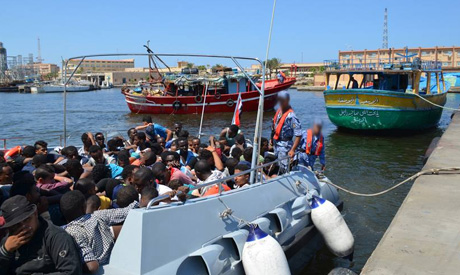Date: Wed, 30 Sep 2015 21:40:19 +0200
62% of irregular Egyptian migrants to Italy are minors searching for better living conditions elsewhere, says International Organization for Migration

The Head of the International Organization for Migration Egypt office, Amr Taha, said on Tuesday that Egypt has an alarmingly high percentage of minors irregularly migrating to Europe.
In an interview with Aswat Masriya, Taha added that Italy received 4000 Egyptian migrants in 2014, 2000 of who were minors without their parents or relatives.
Taha further explained that the percentage slightly increased during the first six months of 2015, with the number of irregular child migrants rising to 62%.
He also called for the establishment of shelters, health care and education centres in Egypt to receive the migrants upon their arrival back to the country.
High unemployment rates in Egypt and the political unrest in neighboring countries has led to an increase of irregular migration to Europe. The absence of a strict punishment for smugglers has also contributed to the high migration rate among youth in Egypt.
The chairman of the Egyptian National Coordinating Committee on Preventing and Combating Illegal Migration , Naela Gabr, previously warned of the increasing number of irregular, unaccompanied child migrants. She added that some southern European countries’ laws allow minor migrants residency until they reach the age of 18, thus resulting in the number of minor migrants surpassing that of migrants between the ages of 18-35.
Gabr also said in an interview with Aswat Masriya that the national commission previously drafted a law to combat irregular migration and the smuggling of migrants. However, she added that Egyptian law does not yet criminalise irregular migration.
Gabr said that the law that was submitted to the transitional justice department during former Prime Minister Ibrahim Mahlab’s first government criminalises irregular migration and imposes sentences of up to 25 years in jail for the smugglers in the case of the death of migrants.
According to the International Labour Organization, out of the total number of global migrants, the percentage of irregular migrants in the world is between 10-15%. The number of irregular migrants in Europe is estimated by the International Organization for Migration to be around 1.5 million people while the European border control organisation Frontex announced that the number of irregular migrants has increased by 250% during the first two months of 2015.
Large numbers of migrants from African and Middle Eastern countries have been attempting to cross the Mediterranean in recent years, primarily from the Libyan coastline, in order to reach Europe. Many are refugees fleeing war or persecution, while others are migrants searching for employment.
Egyptians and people from other nationalities are regularly arrested by Egyptian authorities while trying to illegally cross its borders.